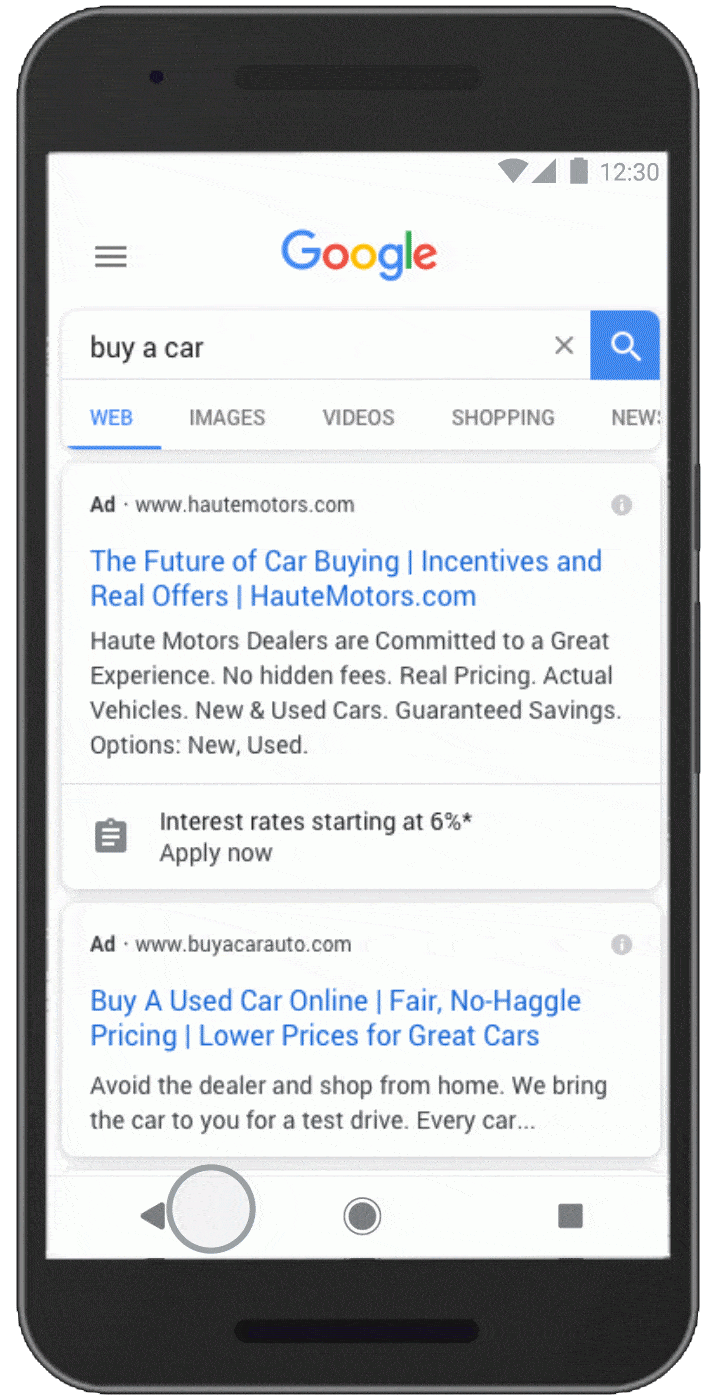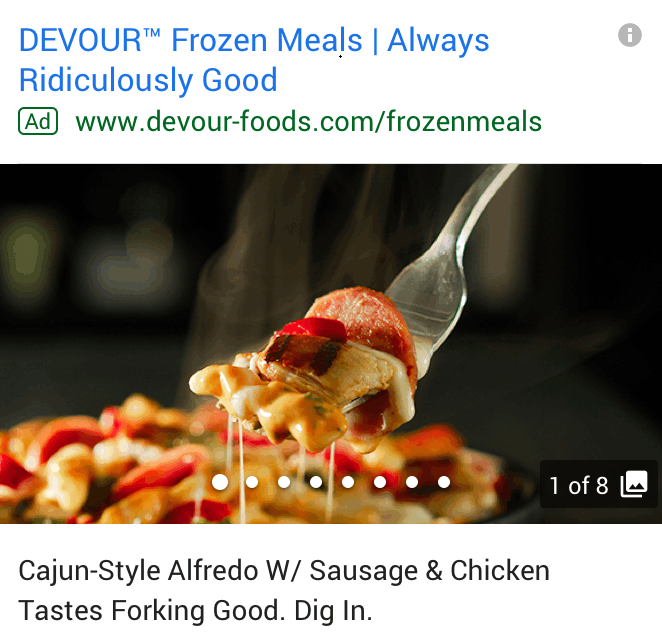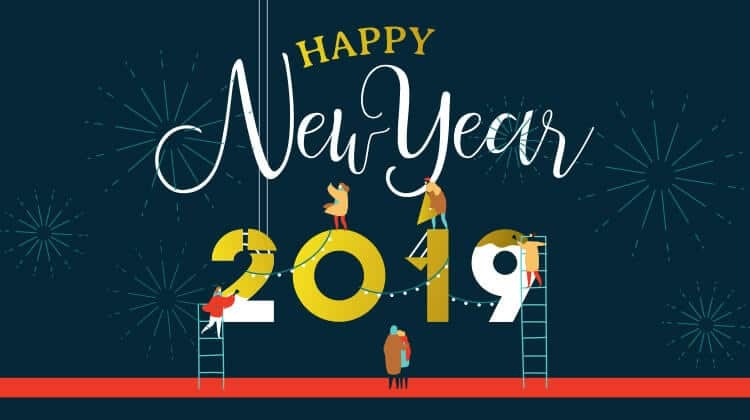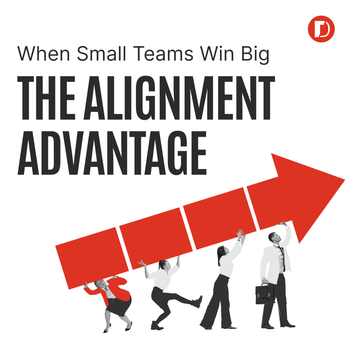2019’s Biggest Google Ads Updates and What They Mean to You
by Aden Andrus • January 2, 2020
Welcome to 2020! Last year was a big year for a lot of reasons, and Google Ads was certainly one of them. Google released a ton of new features and options and updated their platform in a variety of ways.
In fact, there were so many changes that if you weren’t paying close attention, you probably missed a few. So, to get you up to speed, let’s take a look at the biggest Google Ads updates of 2019 and what they mean to you and your business.
1. Close Variants Expanded (again)
Back in July, Google expanded their definitions of phrase match and broad match modifier keywords to include even more close variants. Up till that point, only plurals and misspellings of words counted as close variants, but the update expanded the definition of close variants to include things like synonyms and paraphrases.

Now, this wasn’t the first time Google had expanded the definition of close variants. They did something similar back in 2017 with exact match keywords. Due to the “exact” nature of exact match keywords, though, the consequences of that change were fairly limited.
For phrase match and broad match modifier keywords, however, this change had a lot more implications. By loosening the definitions of these keyword match types, Google heavily blurred the lines between the different match types.
Their explanation? Intent trumps semantics. Or, in other words, “we know better than you do”.
It’s a fair enough argument. With their massive database and algorithms, Google’s ability to analyze and interpret search intent is probably better than what most advertisers could do on their own, but this update definitely affected a lot of campaigns. In the aftermath, it’s more important than ever to keep an eye on the Search Terms report and manage your negative keyword list.
2. New Search Advertising Audiences
Back in 2018, Google added audience targeting as an option for paid search campaigns. Last October, things got even better when affinity audiences and seasonal event segments for in-market audiences made their debut as targeting options for paid search.
Affinity Audiences
Affinity audiences have been a staple of advertising on the Google Display Network for quite some time. Similar to targeting by interest on Facebook, they allow advertisers to target users with specific interests.
Since affinity audiences are based on Google interpretations of search history and the pages users frequent, they’re probably not quite as robust or accurate as interest audiences, but they’re definitely a useful targeting option…one that gets even better when coupled with paid search advertising.
Now that affinity audiences are available as a targeting option for paid search campaigns, you can layer them together with your keywords and get incredibly specific with your targeting. So, instead of simply targeting keywords like “organic makeup”, you can add in the Beauty & Wellness affinity audience to ensure that your ads end up in front of the right audience.
Seasonal Event Segments for In-Market Audiences
In-market audiences allow advertisers to target people who are in a relevant buying pattern. Based on search history and other factors, Google identifies users who are “in the market” for a particular item or service and then groups them into relevant in-market audiences.
This is an incredibly useful targeting option that Google made even better this year with seasonal event segments. Now, not only can you target people looking to buy what you’re selling, but you can also target them based on the specific occasions they’re shopping for. This allows advertisers to create incredibly specific (and compelling) ad copy for their search campaigns.
3. Average Position and Accelerated Delivery Removed
In addition to releasing a variety of new features, Google also retired a couple of fixtures in their platform: average position and accelerated delivery.
Average Position
For years, advertisers have used average position to get a feel for where their ads were typically showing up on the search engine results page (SERP). An average position of 2.1, for example, meant that your ads were the second ad to show up most of the time.
However, a lot has changed over the years. Mobile has become the dominant device. Google eliminated right-side text ads. Ads show up in different places than they used to.
As a result, average position didn’t mean what advertisers thought it did.
Since average position had become a somewhat misleading metric, Google decided to get rid of it in favor of more precise and relevant metrics: top impression rate, top impression share, etc. In the long run, it was probably for the best, but the end of average position definitely caused some waves amongst advertisers!
Accelerated Delivery
Another staple of paid search advertising has been accelerated delivery. This little setting told Google to run your ads as fast and as hard as possible until your budget ran out.
Unless you had a huge budget, though, most advertisers who knew what they were doing tended to opt for standard delivery, which spread your budget throughout the day. It generally produced better results and ensured that you didn’t end up missing out on potential clicks and conversions later on in the day.
Apparently, Google decided that accelerated delivery wasn’t worth keeping around, so they removed it as an option for search and shopping campaigns. If you really miss it, you can still use it in your display and video campaigns, but if it was an important part of your search strategy, you can always imitate accelerated delivery by scheduling out positive bid adjustments for the early morning hours.
4. Audience Expansion Tool
Display advertising has always been a bit tricky. Banner blindness is a very real thing these days and it can be hard to get your ads in front of the right audience.
As a result, Facebook has always had a bit of an edge when it comes to building brand awareness. Putting an ad into someone’s news feed increases the likelihood that they’ll see and notice it, and with Facebook’s intimate knowledge of their user base, it’s a lot easier to get in front of a relevant audience.
However, don’t count the Google Display Network out. With the right targeting, you can still get great—often more affordable—results with the GDN than you can with Facebook. The trick has always been figuring out your targeting.
Well, it seems that Google decided to take a page out of Facebook’s…er, book.
Facebook’s lookalike audiences are an incredibly powerful way to identify potential customers using your current site traffic. But, there wasn’t really a way to do that on the GDN—until now.
With the audience expansion tool, you can target people who behave similarly to the users you’re already targeting. Using the tool, you can easily increase impressions, clicks and conversions. It’s simple, effective and incredibly easy to use. What’s not to love?
5. Lead Form Ad Extensions
As with the audience expansion tool, Google’s lead form ad extensions feel a bit like an effort to catch up with Facebook. However, in this case, Google’s new lead form feature has the potential to beat out Facebook lead ads.
Both lead ads and lead form ad extensions address an important issue: filling forms out on mobile is a huge pain. As a result, while the majority of internet usage happens on mobile, it’s a lot harder to get people to convert on their phone.
With lead ad extensions, however, users don’t even have to visit your website to convert—they can fill out your form right on the SERP!

The benefits of this ad extension are pretty obvious. If someone’s ready to convert when they see your ad, why bother them with the headache of visiting your website, rethinking whether or not they want to reach out, finding your form and filling in all of their information? Wouldn’t it just be easier if they could press a few buttons and submit their info?
This is the same argument as the one Facebook makes for lead ads, and it’s a good one. So why does this get us more excited than lead ads do? Intent.
In our experience, Facebook lead ads often result in tons of low-quality leads. People aren’t actively looking for what you’re trying to sell, but your ad makes them curious and they fill out your form almost without thinking about it.
On Google, however, people know what they want and they’re actively looking for a solution. The intent is much higher, so the lead quality should be quite a bit better—provided that your targeting and messaging are on point.
This update is still in beta release right now, so we’re still testing this new update, but it certainly has a lot of potential.
6. User-Generated Images in Shopping Reviews
What’s Amazon always had over Google Shopping? Well, besides 2-day shipping, the biggest thing has always been user-generated reviews. Say what you want about Amazon and review fraud, but customers love Amazon reviews. There’s nothing quite so reassuring as seeing that someone else got the product you want and it looks good.
On Google Shopping, however, user-generated images haven’t really been an option. Sure, you can have them on your website, but they won’t show up when people are in that critical decision-making phase.
Now, however, Google is giving advertisers the ability to add user-generated images to their Shopping Ads. If you use Shopping Ads, you’ve probably already signed up for the Product Ratings Program and built out your product reviews feed. If so, you can use Google’s new <reviewer_images> schema to upload photos from your customers directly to the Google Merchant Center.
It might not make Google Shopping the same as Amazon in your potential customer’s eyes, but it’s definitely a big step in the right direction.
7. Gallery Ads
As great as paid search on Google is, it does have its limitations. It’s great to tell someone about how great your cruises are, but wouldn’t it be great if you could show someone what they’re like? Reading an ad about how tasty and fresh your food is can be nice, but does it make you salivate the way a good picture of steak does?
Unfortunately, when it comes to paid search, we’ve had our hands tied this way for decades. We can tell, but not show.
Now, this isn’t universally true. If you’re in ecommerce, product listing ads (PLAs) allow you to show a simple image of your product on the Search Engine Results Page (SERP), but even Shopping ads are fairly limited. So, if you’re advertising on the search network, you’ve always had to lean heavily on words to sell for you.
Until now.
During this year’s Ads Innovation Keynote, Google announced a groundbreaking new paid search ad type: gallery ads.
Image Ads on Mobile?
To put it simply, gallery ads will allow businesses to run paid search ads with images on mobile. Now, if you’ve ever used carousel ads on Facebook and Instagram, gallery ads will feel very familiar. Like their social media counterparts, gallery ads are built around a swipeable carousel of images.
Basically, they’ll look like this:

However, unlike carousel ads on Facebook or Instagram—or even banner ads on the display network—gallery ads will show up in response to a user’s search query. That makes gallery ads intent-driven image ads.
The Next Level in Paid Search Advertising?
This is a big deal, because it addresses one of the fundamental problems with paid search: creating a compelling ad. Throughout the history of paid search, figuring out how to milk a compelling message out of a limited number of text characters has always been a huge headache.
How do you simultaneously reference the pain point that triggered the search, explain how your offer solves the problem, differentiate yourself from the competition, establish credibility and incentivize someone to click in 270 characters or less?
It’s a mystery that has stumped many marketers.
With the right picture, however, you can convey a lot of things in a single glance. That’s what makes gallery ads so exciting. With these ads, instead of trying to pack everything into a few headlines and descriptions, you can use your image to connect with your audience and focus on selling with your ad copy.
Conclusion
From gallery ads to new search audiences, 2019 was full of new updates and changes for Google Ads. It was a big year for Google…and we only covered the highlights.
The good news is, most of these updates were steps in the right direction. They make life easier for us as advertisers, helping us get better, more affordable results from our advertising. And, in the end, that’s good for everyone: advertisers, consumers and Google.
By the way, if you’d like help making the most of your Google Ads campaigns, let us know here or in the comments. We would love to give you a hand!
What were some of your favorite Google Ads updates in 2019? Anything you’d add to this list? How do you feel about these updates? Leave your thoughts in the comments below.





